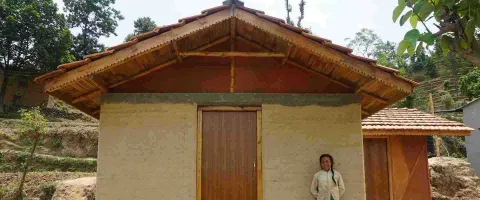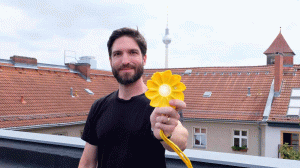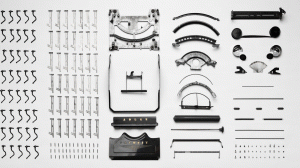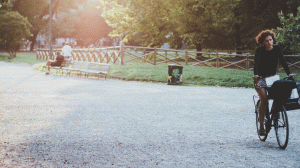Abari is a socially and environmentally conscious research, design, and construction company that celebrates the vernacular architectural tradition of Nepal. Combining modern architecture with traditional materials, the firm specializes in the use natural building materials, particularly bamboo, which has a rich cultural heritage in Nepal and is ecologically sustainable. From open source design to overcoming the earthquake in 2015, Nripal Adhikary shares his story of Abari and its work.
Tell us about Abari - what motivated you to found it?
When I was young, I recieved many opportunities to travel to the mountains of Nepal. Ever since, I was fascinated by how people in these regions build beautiful homes despite not having architects, modern tools or even basic road services.
These amazing heritages were unfortunately considered primitive by policy makers and architects and thus are slowly disappearing from our rural landscapes. The rate of urbanization, a.k.a concretization, is at a whopping 10 percent in Nepal - one of the highest in the world. There was no one doing anything either at advocacy or implementation level to preserve or promote this heritage.
I realized if our generation doesn't do anything, it will be too late. Therefore, in order to play my part, I started Abari.
Abari wants to encourage the architectural tradition of Nepal. How are you realizing this?
We are a design, research and construction team. Our main materials of focus are earth and bamboo, as they have a deep cultural association in Nepali psyche. From the ecological perspective they require minimal to no energy to build and are abundant. Similarly, from an engineering perspective, they are earthquake and fire resistant and from a health perspective they have amazing healing properties because they breathe like cotton and regulate temperature.
We have documented many traditional structures from the high plateau of the Gobi desert to the tropics of Terai. Synthesizing the traditional wisdom with the modern engineering and computational techniques, we design structures to meet the contemporary taste. I think it appeals to people of different spectrums as our clients span from humble farmers to rich business people.
The Nepal earthquake in 2015 destroyed hundred thousands of homes. What where the biggest social challenges the years after the disaster and which role did you play in it?
More than 2/3 of Nepal is endowed with beautiful traditional architecture and the tradition is still alive in many remote regions. However, especially after the earthquake, there was a huge propaganda machine working in cohorts with international aid agencies which constructed a perception that traditional ways of construction were inferior and only industrial concrete based engineering would withstand future earthquakes.
The market, government and international aid agencies were working in unison to undermine our 1000s of years of architectural history. Indeed, fighting against these biases was not easy and we didn't have the resources to do so.
We instead worked in a community where we had already built a good rapport. We are very proud to say that the community continues to support our work and we are building a sustainable community that has schools, training centers, an artist retreat and a yoga hall, which are all made of local resources.
Every organisation has its up and downs, what achievement are you most proud of? Was there ever a low point and if so, how did you overcome it?
We have been working as barefoot architects for the last 10 years in two communities- first in the tropical plains of Chitwan and the other in the hills of Kavre. We wanted to work in two different bio-regions in order to demonstrate a closed economy that is good for the planet and the community. In other words, we wanted to create a supply chain where the processes are transparent and regenerative (rather then exploitive).
We are very proud to say that in Chitwan we have turned a flooded barren river bank into a vibrant forest by planting bamboo. The bamboo is then used to make hand-crafted products and homes. Similarly in Kavre we are creating a community that aims to be a model in architecture, wellness and creativity not just in Nepal, but in Asia.
Working with communities is very rewarding, but it requires lots of hard work and patience to win over their trust.
About the downside, yes, we have had some. There was an unhappy family member who tried to sabotage our relationship with these communities by spreading false news. Initially, we felt so disheartened that we wanted to abandon our work. In the end, it was so heart-warming to see how the communities from far and wide came in our defence. We not only felt stronger but more optimistic, which gave us more energy to continue.
You also offer open source manuals on your website. What led you to the decision to make your designs accessible to everyone?
We feel like we have learnt so much from our traditions and communities that is our responsibility to give back to them. After the earthquake, so many people came to us for help. Since, we have a small team and we could not physically help most of the people, we decided to help by providing free information through newspapers, the website and a brochure. We had more than 100,000 downloads from our website; in a country where internet is not so widespread, that number even surprised us.
What would you wish for the future of Nepali society and the sustainable building landscape?
We wish to be an example to world. We want to show that one can live a healthy, creative, sustainable and prosperous life by harnessing resources that surround us.










